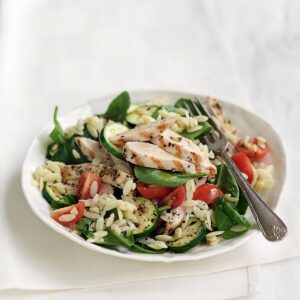
As we settle down to life under lockdown, thoughts start turning to how to stay safe, when out shopping for essentials, and avoid bringing coronavirus droplets into your home. Healthy Food Guide editor Jenny de Montalk shares advanced hygiene practices to keep you and your household well.
1. Most important, stick to the basics
• Keep practising cough or sneeze etiquette (into the crook of your arm or a disposable tissue)
• Dispose of used tissues immediately
• Wash your hands with soap and water for 20 seconds and dry thoroughly (or use sanitiser if you have some) before eating and food handling, after coughing sneezing or blowing your nose, and after touching surfaces outdoors such as petrol pumps, shopping trolleys or baskets, EFTPOS machines, money, etc
• Avoid touching your face
• Keep a two-metre distance between you and anyone you’re not in your lockdown bubble with
• Call ahead if you need to visit your healthcare provider
• If you are unwell, follow all the above guidance, as well as keeping a distance from people in your household. Do not share drinking and eating utensils if you are sick, or bed linen and towels. Wash all eating utensils before placing in the dishwasher. Stay at home until your doctor says you are well again.
2. Advanced hygiene after coming in from shopping or essential work around people
• After being outside, remove your shoes before entering the house. Place them in a box or on a shoe rack
• Place your keys, phone and wallet in an assigned box or container. Regularly disinfect these items
• Using a disinfectant cleaner, wipe down any door handles or surfaces you come in contact with
• Remove your outdoor clothes and place them directly in a basket or washing machine to be hot washed. Wash your hands and any exposed skin with soap and water or, better still, hop in the shower so you can wash your hair too.
3. What to do with your grocery shopping
• While you’re out, keep at least 2 metres apart from other people. Try not to overhandle items. Make a plan of what you’re going to get before you leave, so you can limit time spent at the supermarket and avoid touching more surfaces than necessary
• If you can, leave your non-perishable shopping outside the house, say in a garage, car or shed, for three days, to allow time for any virus droplets on box and jar surfaces to die
• If you can’t do that, place your shopping on one end of a bench or table and keep the other end as the ‘clean’ end.
• Decant into clean containers items, such as biscuits and cereal, and throw away the wrappers
• If you don’t have enough containers, these items often have a box and an inner wrapper. Just remove and dispose of the outer packaging
• For items that are in jars or plastic containers, wash well with soapy water and dry with paper towels, then wipe down with a disinfectant
• Wash any loose fruit or vegetables and dry with disposable paper towels
• Store reusable shopping bags outside your home
• When you’ve finished removing or disinfecting the packaging and put your items away, wash and disinfect the surface the groceries were on.
4. Clean and disinfect surfaces regularly
• Household bleach diluted in water is an effective disinfectant. Simply mix one part household bleach to around nine parts water. Never mix bleach with ammonia
• To disinfect surfaces in your home, wash them first with soap and water then wipe them down with your bleach disinfectant
• Keep your windows open while using bleach cleaners, for ventilation
• Be aware bleach can discolour fabrics, so try to avoid spilling or spraying it on clothing and furnishings, etc.
5. How to safely use face masks
The Ministry of Health does not recommend face masks for most people in the community who are not healthcare workers or facing large numbers of people at work. The exception is if you have symptoms of an acute respiratory infection, because a face mask may reduce the risk of spreading the virus to others. If you do use a face mask it’s important your wear it correctly and follow these steps:
1. wash hands with soap and water or use hand sanitiser
2. place mask over nose, mouth and chin
3. fit flexible nose piece over nose bridge
4. secure on head with ties or elastic
5. adjust to fit – secure on your head, fitting snuggly around your face with no gaps
6. avoid touching or adjusting your mask during use.
To remove a mask:
1. wash hands with soap and water or use hand sanitiser
2. avoid touching the front of the mask
3. if the mask has ties, untie the bottom, then top tie
4. remove from face
5. discard the mask, do not use again
6. wash hands with soap and water or use hand sanitiser immediately.
Article sources and references
- Cleaning and Sanitizing with Bleach after an Emergency. Centres for Disease Control and Preventionhttps://www.cdc.gov/disasters/bleach.html
- Good hygiene for coronavirus (COVID-19) Australian Government Department of Healthhttps://www.health.gov.au/news/health-alerts/novel-coronavirus-2019-ncov-health-alert/how-to-protect-yourself-and-others-from-coronavirus-covid-19/good-hygiene-for-coronavirus-covid-19
- COVID-19 (Novel coronavirus). Health Quality & Safety Commission New Zealandhttps://www.hqsc.govt.nz/our-programmes/infection-prevention-and-control/novel-coronavirus/
- COVID-19 (novel coronavirus) – face mask and hygiene advice. Ministry of Healthhttps://www.health.govt.nz/our-work/diseases-and-conditions/covid-19-novel-coronavirus/covid-19-novel-coronavirus-health-advice-general-public/covid-19-novel-coronavirus-face-mask-and-hygiene-advice
www.healthyfood.com










